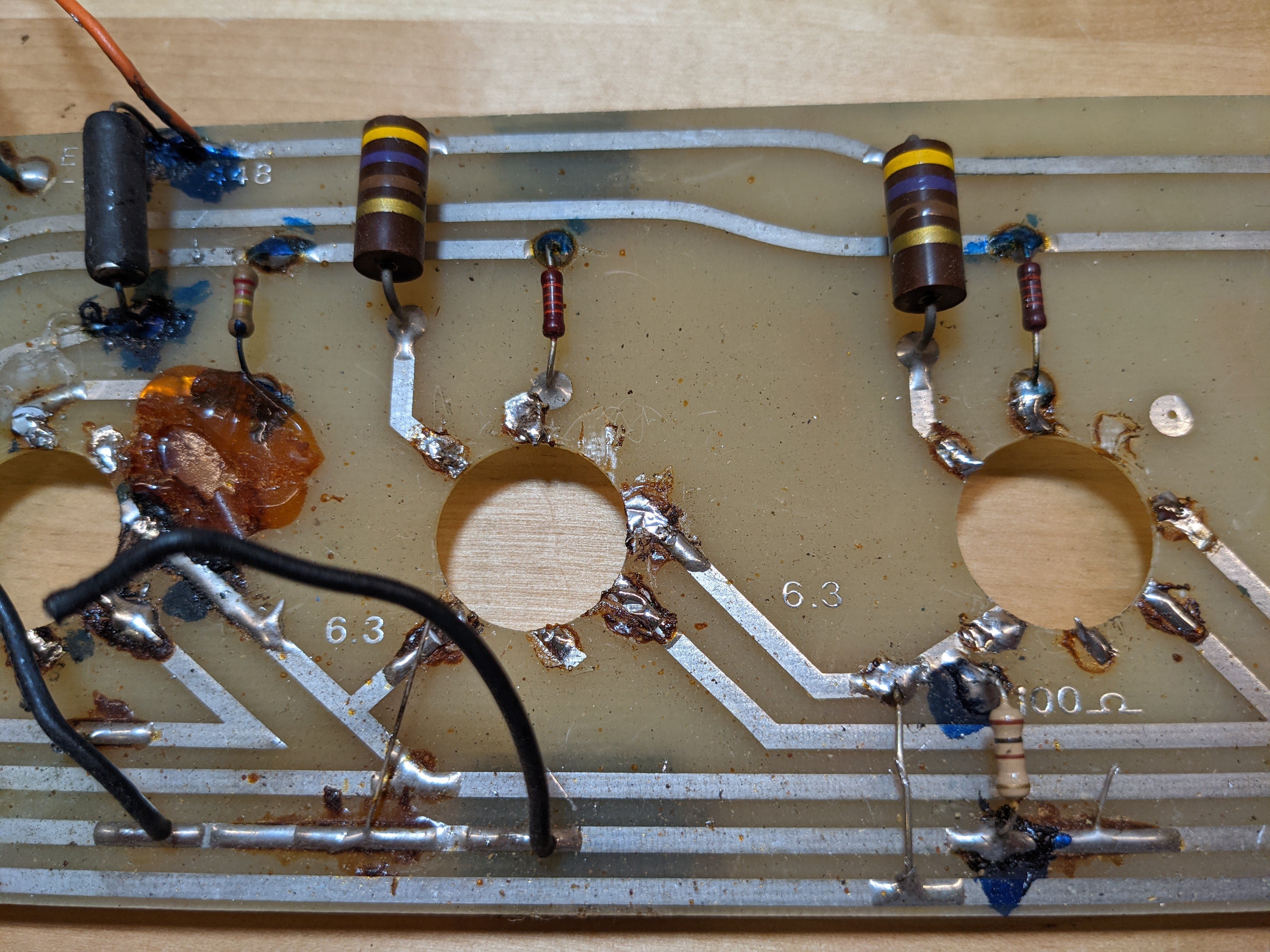I came into possession of a Mark series amp (it's non-functional, and was purchased for parts) that I can't seem to identify. Someone before me made a complete mess of the inside (cutting up and rearranging the preamp board, etc), so I can't make heads or tails of what it should be.
The serial number is B647, and on the side of the chassis it says "HG 15". On the top in marker it says "HG Simul". There is a piece of tape on the other side that says "Brad Gillis Other". It contains a reverb tank and a 5-band EQ, and 4 6L6 tubes. It is dual channel and has a "Gain Boost" knob. The output transformer reads PT100 Simulclass, however the switch on the front says "Full Power / Half Power". It has a presence control on the front, and space for one on the back, but it's plugged with a silver plug. There is also a reverb tank and a reverb transformer, but the hole for the reverb control is also plugged, and the left-most tube (viewed from the back) is missing (which I think should be the reverb tube). There is a signature on the back which looks like "MB" underneath the power cable.
Inside is again confusing: the output board says PWR-7C, the preamp board has been cut up and the number is missing. It seems to have a mix of relays and Vactrol's to control the channel switching. This is confusing, as I thought Vactrol's were only used in the 2C (and later). If it was originally a reverb unit, why isn't it an HRG instead of HG? The preamp board appears to have been cut into 4 separate pieces, and has relays and Vactrols glued all over it.
On balance, I would guess it's a somewhat earlier Mark 2B, and I'd like to restore it if possible. Maybe someone thought they could convert it to a 2C and got lost? Given the state it's in I don't mind gutting it completely and hand-wiring a 2C+ but I need to know where I'm starting from.
I'll upload some pictures when I get home and have it apart again.
The serial number is B647, and on the side of the chassis it says "HG 15". On the top in marker it says "HG Simul". There is a piece of tape on the other side that says "Brad Gillis Other". It contains a reverb tank and a 5-band EQ, and 4 6L6 tubes. It is dual channel and has a "Gain Boost" knob. The output transformer reads PT100 Simulclass, however the switch on the front says "Full Power / Half Power". It has a presence control on the front, and space for one on the back, but it's plugged with a silver plug. There is also a reverb tank and a reverb transformer, but the hole for the reverb control is also plugged, and the left-most tube (viewed from the back) is missing (which I think should be the reverb tube). There is a signature on the back which looks like "MB" underneath the power cable.
Inside is again confusing: the output board says PWR-7C, the preamp board has been cut up and the number is missing. It seems to have a mix of relays and Vactrol's to control the channel switching. This is confusing, as I thought Vactrol's were only used in the 2C (and later). If it was originally a reverb unit, why isn't it an HRG instead of HG? The preamp board appears to have been cut into 4 separate pieces, and has relays and Vactrols glued all over it.
On balance, I would guess it's a somewhat earlier Mark 2B, and I'd like to restore it if possible. Maybe someone thought they could convert it to a 2C and got lost? Given the state it's in I don't mind gutting it completely and hand-wiring a 2C+ but I need to know where I'm starting from.
I'll upload some pictures when I get home and have it apart again.








































